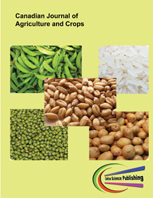Germination and Field Emergence of Neorautanenia Brachypus (Harms) for Livestock Survival in Zimbabwe
DOI:
https://doi.org/10.20448/803.4.2.188.199Keywords:
Germination, Field emergence, Scarification, Neorautanenia brachypus (Harms), Drought mitigation.Abstract
There is a lack of information on establishment of Neorautanenia brachypus (Harms), a tuber legume critical for livestock survival. Studies were conducted in 2015 to determine the influence of different scarification treatments on establishment of Neorautanenia brachypus (Harms). Germination and emergence patterns were determined under laboratory and irrigated field conditions. Neorautanenia brachypus (Harms) seed attained peak germination and emergence of 45 % and 28 % under laboratory and field conditions, respectively. Mechanical and acid scarification had a significant (P< 0.01) effect on germination. Mechanical and acid scarified seed was first to germinate on day 5 after planting followed by control on day 6, KN03 submersion on day 8 and lastly prechilling and preheating treatments on day 12. The final germination was in the order mechanical (85 %) > control (45 %) > acid submersion (41 %) > KN03 submersion (26 %) > prechilling (19 %) > preheating (13 %). Under field conditions, emergence was significantly different (p<0.01) with the highest for mechanical scarification (60%) followed by all four acid treatments (>50%) while the rest attained >30 %. This study shows that farmers can effectively establish Neorautanenia brachypus (Harms) in their fields using either mechanical or acid scarification. However, further study is required to ascertain tuber growth, shoots productivity and nutrient requirement.


